-
PRODUCTSreturn
-
SERVICES AND PARTS
-
ABOUT US
The 5 solutions to increase the lifting height
6:58
In today’s factories, every inch of space counts! Often, obstacles or a lack of space make certain manipulations difficult, forcing companies to modify their methods, resulting in additional costs. That’s why, when I talk to customers, they often ask me how they can increase their lifting height.
Premium Industrial Group has been supporting its customers for over 15 years in the design and installation of overhead cranes. We tailor our lifting solutions to each customer’s available space. So, is it possible to increase the lifting height of an overhead crane? In other words, what influences lifting height?
In this article, you’ll discover the 5 factors that influence lifting height. We’ll also clear up some misconceptions about what doesn’t affect lifting height. After reading, you’ll know exactly which solutions to choose to optimize your space, so that you can lift your loads without having to completely change your operations.
What factors influence lifting height ?
The following 5 elements directly influence lifting height. Knowing these elements will help you determine what you can change in your project to optimize the use of your overhead crane. That’s why we’ll take a look at each of these elements and what can be done to increase lifting height.
1. The clear height available
The clear height represents the height between the ground and the lowest obstruction above the track. This height indicates the highest point where the lifting equipment can be installed.
What can be done to increase it? If the object preventing the overhead crane from being installed higher up can be moved, this will increase the lifting height. Sometimes, it’s worth checking whether there’s a way of increasing the clear height. For example, if a garage door track is obstructing the runway, could it be installed higher or lower? See our article : Managing clearance and avoiding obstructions leads to unhindered installations
But in general, the available height determines the clear height. In this case, what else can you do?
2. The type of overhead crane
There are 3 main types of overhead crane : single girder, double girder and under running.
Single girder overhead crane : This model has one girder on the runway track, with the hoist moving underneath. Lifting height is reduced by the size of the beam.
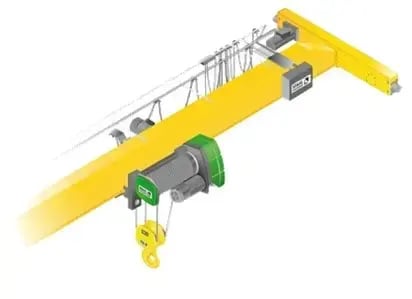
Double girder overhead crane : This overhead crane has two girders on the runway track, and the hoist moves over them. This enables the maximum lifting height to be reached. However, if the part to be lifted is very bulky, the beams can get in the way, and you’ll need to use accessories that reduce the height.
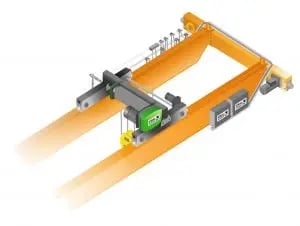
Under running overhead crane : This type generally has a single girder, but it is suspended from the runway track, rather than resting on it. The hoist moves under the beam, reducing the lifting height.
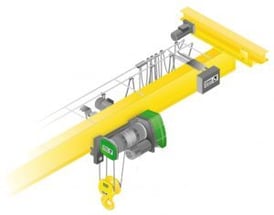
What can be done to maximize height : Opting for a double girder overhead crane increases lifting height but also increases cost by around 30%. Whenever possible, to gain height, it’s best to avoid using an under running overhead crane.
3. Girder type
There are different types of girders. By opting for a wider, but lower girder, you can increase lifting height. However, in the case of a hoist running on top of a double girder overhead crane, the thickness of the girder does not affect the height of the hook.
4. Hoist selection
Some hoists are specially designed to increase lifting height. Options are available for both wire rope and chain hoists. To make the right choice between a wire rope hoist and a chain hoist, see our article : Are wire rope hoists preferable to chain hoists? What are the differences?



Chain hoists : Some models, especially those with remote motors, allow the hook to be lifted higher. Standard, low-height or ultra-low-height versions are available.
Wire rope hoists : For wire rope hoists, the lifting height varies according to the chosen model. The sturdier the hoist, the heavier it lifts, but this also affects its cost and clearance.
Lifting height vs. hook height
Lifting height and hook height are two measurements that can be distinct. They should not be confused.
Hook height is the measurement between the ground and the hoist hook in the raised position.
Lifting height is the measurement between the ground and the top of the part to be lifted.
The difference between the two lies in the use of lifting accessories below the hook, such as slings or a spreader bar. The height of these accessories reduces the lifting height.
5. Lifting accessories
Although the maximum hook height is an important parameter, the use of accessories such as slings or spreader bars can reduce the total lifting height (see the section “Lifting Height vs. Hook Height”). You can also check if installing an auxiliary hoist would completely eliminate the lifting accessory.
What can be done to maximize height : It is wise to adapt accessories to minimize height loss, as these adjustments will generally be less expensive than changing the entire overhead crane. Do not hesitate to discuss your specific needs with your lifting accessories provider. If necessary, we can refer you to one of our specialized partners.
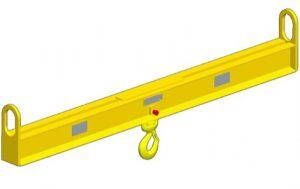
False beliefs : what doesn’t affect lifting height
There are some misconceptions about what actually influences lifting height :
The height of the track : Contrary to popular belief, the height of the runway track does not directly affect lifting height. The overhead crane components are what will be adjusted to maximize lifting height. For example, if the runway track is too low, girder risers can be added to raise the overhead crane.

The attachment of the end carriages : This refers to how the beam is connected to the crane wheel module. Modifying the connections of the end carriages depends on the height of the runway, and serves to adapt to the runway, not to increase the lifting height.
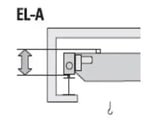
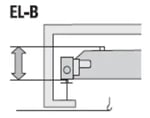
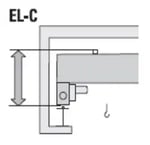
Compact double girder overhead cranes : Compact overhead cranes are cranes with lower girders, often with the hoist recessed between the 2 girders. The aim of this configuration is to free up space when handling large parts, so that the girders don’t become a hindrance. But since the beams can be raised to the highest point, the hook will be in approximately the same position. This does not affect the lifting height.

By clarifying what influences lifting height, you can move ahead with your project with these elements in mind.
To get into action !
Maximizing lifting space means knowing what influences the lifting height of an overhead crane. If you’re faced with this kind of constraint, the first step is to clearly determine your needs. This can be done with the assistance of your lifting expert and, in the case of a new building, in collaboration with your structural contractor. We invite you to prepare for this collaboration with our article Need an overhead crane: Where to start?
You now know that choosing the right type of overhead crane, girder and hoist is what will enable you to increase your lifting height. Premium Industrial Group can support you in your project by determining the applicable options with you. Fill in the form at the bottom of the page, and we’ll contact you shortly to help you with your project.
Représentant technique chez Groupe Industriel Premium inc.
Learning Center
Whether you're an expert or know nothing about cranes, you'll find everything you need to know HERE.





